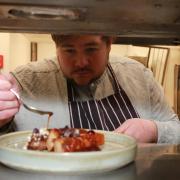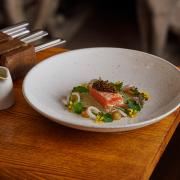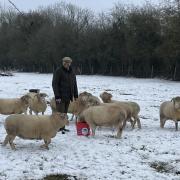January, and there’s no better time to discover new wines to brighten up our days and match the warming dishes of winter.
Despite the January chill, a dry vibrant white wine is just what’s needed to awaken our taste buds, while a rich red is warm and satisfying when the temperature drops.
It is easy to stick to the tried and trusted, but a new year offers a good excuse to try something new and push the wine boundaries further!
One country that has been gaining in reputation lately is Argentina. Their history of wine making stretches back to the 16th century but until recently most wine produced there was for the domestic not export market, and was not suited to international tastes. However, Argentina has notched up several successes lately, most notably with the white wine Torrontés and the red wine Malbec.
Torrontés is a white wine grape originally thought to be the same as the Torrontés from Galicia in Spain, however recent DNA evidence shows it to be a crossing of Criolla Chica, a grape cultivated by Spanish missionaries, and the Muscat of Alexandria. These two grapes have combined to make a wholly Argentinean variety that is little known elsewhere but is rapidly gaining fans in the UK. It produces fresh wines with floral aromas, moderate acidity and distinctive peach and apricot flavours, similar to Muscat or Viognier. A glass of chilled Torrontés is a zesty wine that will enliven your mood and is a great accompaniment to appetizers, particularly ‘empanadas’, the small traditional Argentinean savoury pastry filled with meat, cheese, pumpkin and a variety of other combinations!
The cuisine of Argentina is a mix of styles from that of the indigenous peoples to the influences of immigrants from Europe – mostly Spanish and Italian. Whatever the cultural blending though, beef features widely in the Argentine diet, with the highest consumption per capita in the world (55 kgs person). There are no better wines to match beef than the deep fruity Malbecs that are cultivated in vineyards high up in the Andes.
Malbec wines are rich, dark, intensely fruity and can be consumed when relatively young, although many higher-quality structured Malbecs will also age beautifully. Malbec originated in Bordeaux and Cahors in south-western France but two disastrous frosts in the 1950s saw many vines destroyed and they were never replanted. Fortunately vines were brought to Argentina in the 19th century and they thrived there, enjoying the long sunny growing season. Vineyard altitudes range from 2,000-5,000 feet above sea level, where the air temperature stays relatively cool yet sunshine is spread over 300 plus days each year. In spring and summer to compensate for the low rainfall, vital water is brought to the vineyards from Andes’ snow melt via a series of intricate irrigation channels. Malbec has become Argentina’s national red wine grape and its rising star. The best areas of production are Mendoza and Lujan de Cuyo, where the first Malbecs were planted at 5,000ft.
Beef with Malbec? Yes, definitely – either simply grilled, roasted or slowly braised. But it’s also good with duck, pheasant, lamb shanks, and so on. Argentina might be renowned for the tango, cattle ranching and the Pampas, but for now I’m content to try Torrontés and Malbec with their great style and enough complexity to rival the world’s best.
Wines to recommend:
La Chamiza*, Mendoza, Argentina, 2013 Malbec ‘Polo Amateur’ £8.99. 100% Malbec showing good cassis and plum notes. Ripe, dark-fruited and pure on the palate with good length. An authentic Argentine Malbec. Available from: Darley Abbey Wines, Tel: 01332 207066
Alamos Malbec Catena, 2012 Malbec £9.99. This Malbec oozes dried raisiny fruit character, lots of blackberries, a full body and ripe sweet tannins.
Vinalba Seleccion Torrontés, 2012 Torrontés £9.99. Bursting with tropical fruit, peach, pear and pineapple. From Majestic Wines, Derby
*La Chamiza is based at an old stud farm that specialized in breeding a unique type of Polo pony that was a cross between the traditional Criollo horse and the international thoroughbred. The same year that the stud farm was founded, Sig. Don Martin Alsina planted his first Malbec vineyard in the ‘First Zone’, Argentina’s premium winegrowing region, and La Chamiza’s unique relationship between polo and wine began.



























